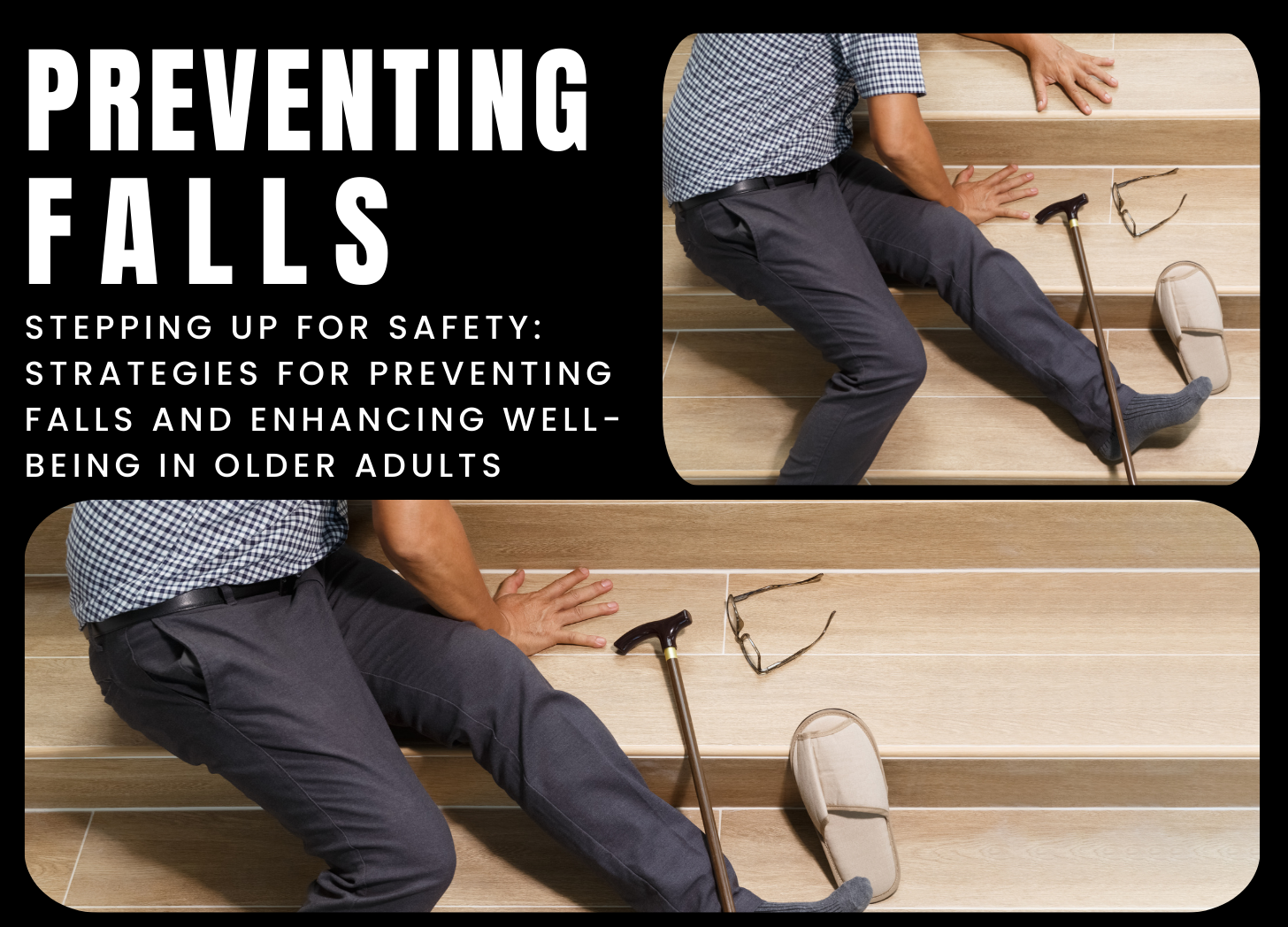Contact Us
Contact Us

Falls are a major public health concern, especially among older persons, and can cause catastrophic injuries, restricted mobility, and a lower quality of life. Falls can occur due to a variety of factors, including environmental dangers, medical disorders, drug side effects, and changes in physical function. However, many falls can be avoided with proactive measures and interventions focused at lowering risk factors and enhancing safety.
One of the most important fall prevention measures is to undertake a thorough assessment of the individual’s risk factors for falling. This may entail assessing balance and gait, muscle strength and flexibility, vision and hearing, medication use, home environment, and a fall history. Identifying and addressing modifiable risk factors can assist to minimize the likelihood of falls and increase overall safety.
Environmental adjustments are critical in preventing falls, particularly at home. Removing tripping hazards such as loose carpets, electrical cords, and clutter, adding grab bars and handrails in bathrooms and stairwells, enhancing lighting, and keeping paths clear and well-maintained can all help to reduce the risk of falls. Individuals at risk of falling may also benefit from the use of assistance devices such as canes, walkers, or stairlifts.
Regular exercise is another important aspect of fall prevention since it improves strength, balance, flexibility, and coordination, lowering the risk of falling and improving overall physical function. Tai chi, yoga, strength training, and balance activities can assist older persons keep their independence and lower their risk of falling.
Medication management is particularly important in fall prevention since certain medications might increase the risk of falling due to adverse effects such dizziness, sleepiness, or poor balance. To reduce the risk of falls, healthcare providers should check prescription lists on a regular basis, identify possibly inappropriate medications, change doses, and prescribe alternative treatments as needed.
In addition to these techniques, raising knowledge about fall prevention and establishing a culture of safety among healthcare providers, caregivers, and older individuals is critical for lowering the number of falls. Education on fall risk factors, safety precautions, and emergency response procedures can empower people to take proactive steps to safeguard themselves and others from falls.
To summarize, falls are a major health risk that can have devastating consequences, especially among older persons. Individuals and communities can work together to minimize the incidence of falls and enhance overall safety and well-being by implementing comprehensive fall prevention techniques such as risk assessment, environmental adjustments, exercise, medication management, and education.
References:
1.Centers for Disease Control and Prevention. (2022). Older Adult Falls. Retrieved from https://www.cdc.gov/homeandrecreationalsafety/falls/index.html
2.National Institute on Aging. (2022). Preventing Falls. Retrieved from https://www.nia.nih.gov/health/prevent-falls-and-fractures
Post a Comment